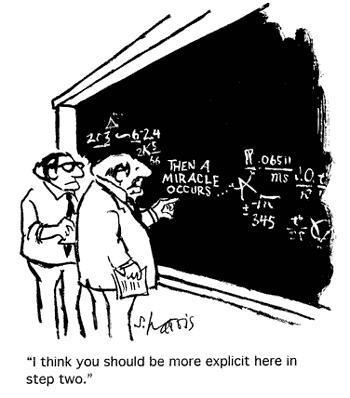Wisdom, Wonders and Pyro-theology
"Jews demand signs and Greeks look for wisdom, but we preach Christ crucified: a stumbling block to Jews and foolishness to Gentiles"
Paul of Tarsus
The apostle Paul famously distanced himself from the two dominant modes of justifying ones political, cultural or religious dogmas. These were the embrace of wisdom (the Greeks) and signs (the Jews). Both the intellectual reflection typified by the Greek philosophers and the embrace of signs so common among Paul's religious community were rejected by him in favour of 'Christ Crucified'.
So what does this mean?
In order to understand we must recall that in Paul's day, just like today, people sought to justify their beliefs and practices through the use of two primary means – rational reflection and signs. In the first they employed reason to solidify their political, cultural and religious dogmas, they developed apologetic discourses and elaborate metaphysical systems (a process called 'rationalisation'). In the second they read advantageous historical events, happy coincidences and beneficial mysteries as some divine stamp of approval. In contrast, one of Paul's truly earth-shattering insights was that 'Christ Crucified' stood in sharp contrast to these strategies, cutting across these attempts at justifying ourselves and our systems. The image of a Crucified God was, and remains, an offense to reason and a stumbling block to signs. Indeed to undergo the Crucifixion means to experience the poverty of our apologetic strategies and the impotence of signs that once justified us.
The problem is that today we have simply reintegrated the Crucifixion back into the categories that Paul saw as antithetical to it. Thus turning the death of God into a mythological explanation of reality (modern theology) and a sign that everything is OK.
In saying this I am not claiming that there is no place for wisdom and wonders but rather that, instead of reintegrating the Crucifixion into these traditional Paulinian categories we must allow the Crucifixion to transform the way we understand them. In other words a post-Crucifixion understanding of wisdom and wonders does not see them primarily as a means of justifying our already held beliefs, but rather as ways of helping to rupture them and open them up to an experience of transcendence. Wisdom is now employed as a means of interrogating our doctrines and drawing out how they are limited, provisional and historical. Signs are no longer are grasped as the way of proving that we are right and chosen, but rather appear as interruptions that cut into our systems of belief, reminding us that there is more in heaven and on earth than can be dreamt of in our philosophies.
This is the kind of perspective that we see being hinted at and worked out in some of the more sophisticated writings of the mystics. The question remains as to whether we can envisage and bring into being vibrant church communities that embrace this pyro-theological approach.
Peter Rollins's Blog
- Peter Rollins's profile
- 314 followers




